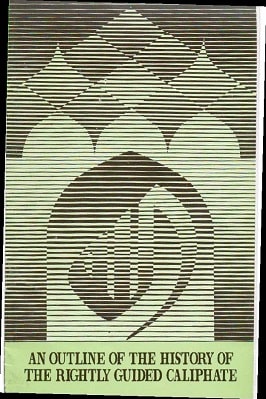
| Book Title | An Outline Of The History Of The Rightly Guided Caliphate |
| Book Author | |
| Total Pages | 39 |
| Book Views | |
| Language | English |
| Book Download | PDF Direct Download Link |
| Get Hardcover | Click for Hard Similar Copy from Amazon |
An Outline of The History of The Rightly Guided Caliphate Da’wah Academy International Islamic University – Pakistan
AN OUTLINE OF THE HISTORY OF THE RIGHTLY GUIDED CALIPHATE
The Rise of the Muslim Caliphate
The devout Muslim Abu Bakr (RA), who had shared with the Prophet (pbuh) the hardships of life, succeeded him in the leadership of the Muslim. Although the problem of succession had not been decided by the Prophet (pbuh}, his appointment of Abu Bakr (RA) to lead the Muslim in prayers implied his priority over others.
Prayer is considered to be second most important of the five pillars of the Islamic faith.
Muhammad (pbuh) was inspired by the democratic spirit of the Arabs. Therefore, he thought it best to leave to them the choice of a successor.
Despite the furious disagreement which occurred after the Prophet’s (pbuh) death between the Refugees or Emigrants (Al-Muhajirun) and the Supporters of Madinah (Al-Ansar) in the hall of the Banu Sa’ida ih Medina, Abu Bakr (RA) was elected in the democratic manner of pre Islamic tribal society (that of the patriarchal state).
Certain qualifications were stipulated as necessary for electing the chiefs of their tribes including advanced age, wealth and children. In addition, Abu Bakr’s (RA) religious zeal was highly appreciated by the Muslims.
Although this form of election accorded with Arab social customs, some notable Arabs, such as ‘Abbas’ the Prophet’s (pbuh) uncle, ‘Ali (RA) the Prophet’s (pbuh) cousin and son-in-law, Talha and Al-Zubayr refused homage. This foretold the division of the Arab community into
Sunnites or Orthodox Muslims, i.e. those who adopt the traditional teaching of the Prophet (pbuh-)(Sunna) supplementing the Qur’an, and Shi’ites, i.e. the part (shi’a) or supporters who adhered to ‘Ali (RA) and believed that he was the only lawful successor (Khalifa, Caliph) of the Prophet (pbuh) and that the first three caliphs, Abu Bakr (RA), ‘Umar (RA) and ‘Uthman, as well as the Umayyad and ‘Abbasid caliphs, were usurpers of Ali’s rights.
Professor Sir Thomas Arnold has mentioned the various similarities and differences between the two political systems which prevailed in the Middle Ages, one in the East and the others in the West. Each claimed to rule by divine appointment based on the revealed Word of God.
But in spite of similarities, the two systems were fundamentally different, the Holy Roman empire was consciously and deliberately a revival of a pre Christian political institution now revived with a specifically Christian character. Side by side with the Emperor was the Pope.
As a Vicar of God upon earth, the Pope ruled over and guided the souls of all men, while it rule of the Emperor to deal with the concen1s of their bodies. Unlike the Holy Roman Empire, the Caliphate was not a deliberate imitation of a pre-existing from of civilization or political organization.
It was the outgrowth of conditions that were entirely unfamiliar to the Arabs and took upon itself a character that was moulded by these conditions.
The Caliphate, as a political institution, was the child of its age, and did not look upon itself as the revival of any political institution of an earlier date. ‘
The theory of the Caliphate differed in another important respect from that of the Holy Roman Empire.
The Orthodox Muslim world has never accepted the existence of any functionary corresponding to a Pope, though among the Shi’ites an exalted degree of authority has been invested in the Imam as exponent of divine truth.
However, among the Sunnis, to whom the historic Caliphate belongs, divine revelation is held to have ended with the Qur’an and the Traditions, i.e. the utterances of he Prophet Muhammad (pbuh) or his intimate companions.
The task of interpretation of these sources of truth was assigned to the Ulama (the learned rather than the Caliph who, in fact, exercised none of the spiritual functions which had been practised by the Prophet (pbuh). It was the duty of the
To read more about the An Outline Of The History Of The Rightly Guided Caliphate book Click the download button below to get it for free
Report broken link
Support this Website
Click here to join our Telegram group for new Books